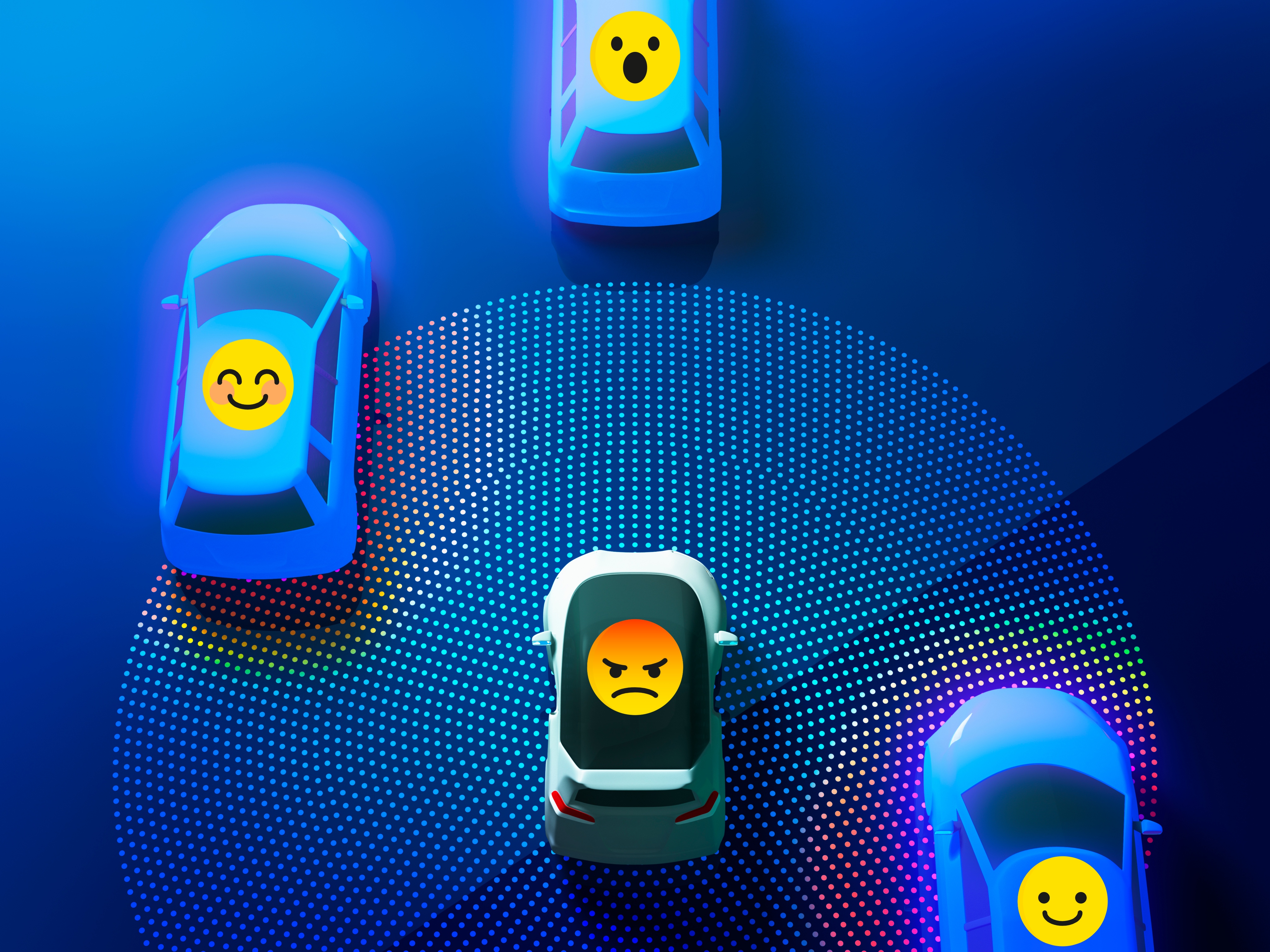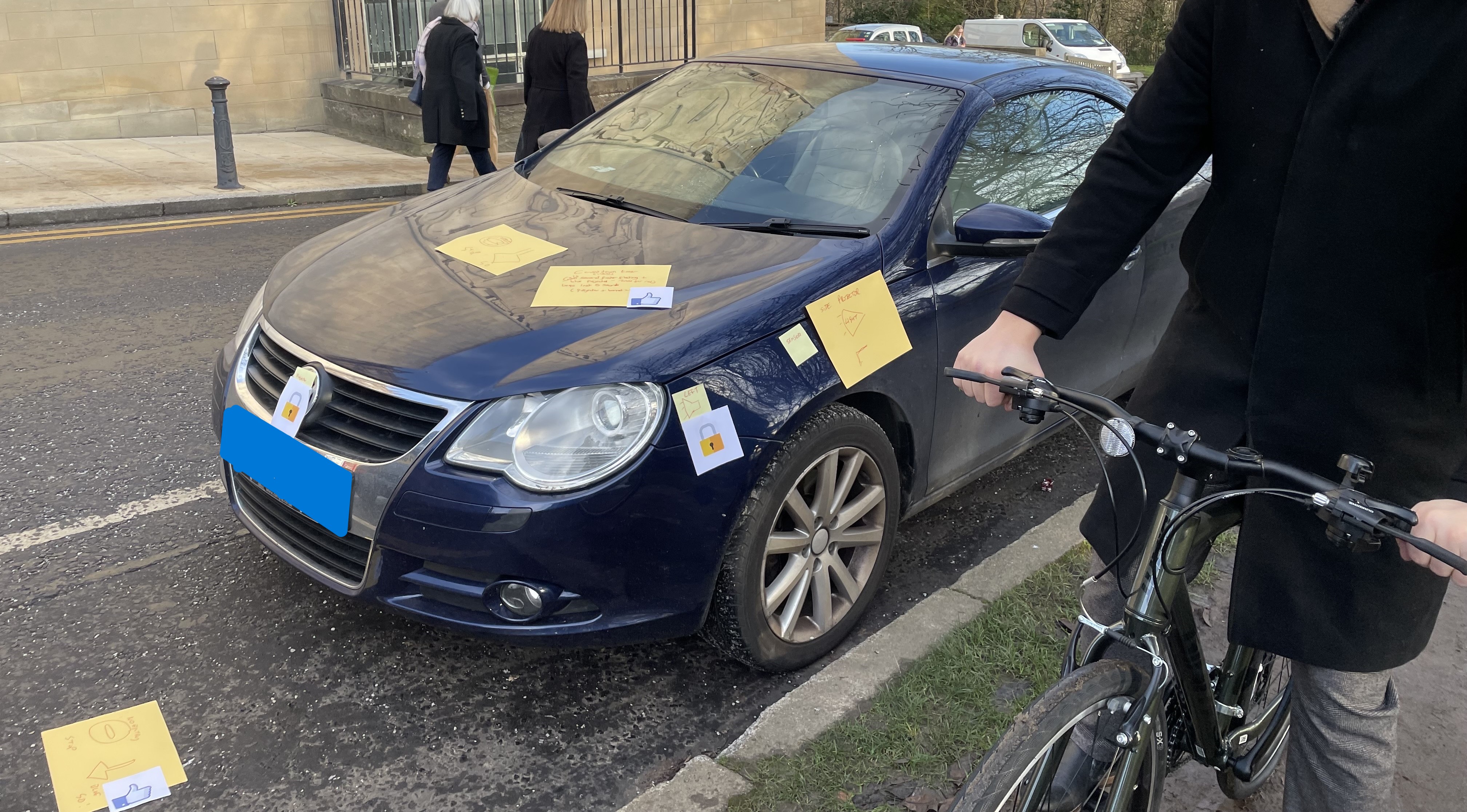Could cars with giant emojis on help cyclists stay safe?
In a future of self-driving cars, the way cyclists interact with vehicles will inevitably change


Roof displays on top of cars showing giant emojis could help cyclists interact with self-driving vehicles, a new study has suggested.
Researchers from the University of Glasgow’s computer science department have been exploring ways to replicate split-second interactions between cyclists and drivers.
Currently, cyclists use eye contact and hand gestures to communicate with drivers, but there is a fear these human interactions will be lost in a world of automated vehicles.
“If this is the future, then I want to make sure not to be run over by an automated vehicle,” professor Stephen Brewster told Cycling Weekly.
Prof Brewster led the research on a new paper titled ‘Pimp My Ride: Designing Versatile eHMIs for Cyclists’, which studies the use of symbols for communication between cyclists and automated vehicles.
“The road is a social space,” he said. “There’s a kind of dance that goes on between who goes here and who goes there, and so if you have to do that with no idea of what your partner is doing, that can lead to all sorts of bad things.”
One of the concepts proposed is a roof-mounted signs, much like the illuminated ones on taxis, that shows emojis. For example, left and right symbols would echo the car’s indicators, while a lightning bolt might show it is accelerating.
The latest race content, interviews, features, reviews and expert buying guides, direct to your inbox!
While the idea might seem strange, PhD student Ammar Al-Taie, co-author of the paper, said emojis “aren’t a big departure from what we already use today”.
“You have sirens, for example, on the roof. You have directional indicators on the car already. So these are, I think, much more feasible to implement,” he said.
“We want to make sure that the symbols are very familiar and easily learned. We use emojis everyday when we text. That’s where the idea really came from. The whole concept is about making cyclists learn as little as possible to interact with autonomous vehicles.”
The duo’s previous research has seen them propose smart glasses to help cyclists detect dangers around them. This time, however, the researchers wanted to take the onus off the cyclist, and put the responsibility on car manufacturers to add new technology.
Their study began by giving eye-trackers to Glasgow cyclists to pinpoint where they look at vehicles. They then gave pens and post-it notes to 12 volunteers, who wrote ideas directly onto a car, suggesting things like extra lights or projectors. “It’s like a portable whiteboard,” said Prof Brewster.

The researchers outlined four concepts in their results: giant emojis, screens showing a ‘virtual driver’, light beams that project onto safe parts of the road for cyclists, and a band of LED lights wrapped around the body of the car.
“A big part of what car manufacturers are considering is pedestrians,” said Al-Taie. “But cyclists pose a much more interesting problem. We have to overtake drivers, sometimes they have to overtake us. We cycle in a narrow lane with them. We encounter them at roundabouts. It’s a very, very complicated space.”
Since their paper came out last month, Prof Brewster and Al-Taie have carried out prototype research, which they say is “super, super fun” and will be released in early 2024.
They will present their paper ‘Pimp My Ride’ at a conference in Ingolstadt, Germany on 20 September.

Tom joined Cycling Weekly as a news and features writer in the summer of 2022, having previously contributed as a freelancer. He is fluent in French and Spanish, and holds a master's degree in International Journalism. Since 2020, he has been the host of The TT Podcast, offering race analysis and rider interviews.
An enthusiastic cyclist himself, Tom likes it most when the road goes uphill, and actively seeks out double-figure gradients on his rides. His best result is 28th in a hill-climb competition, albeit out of 40 entrants.